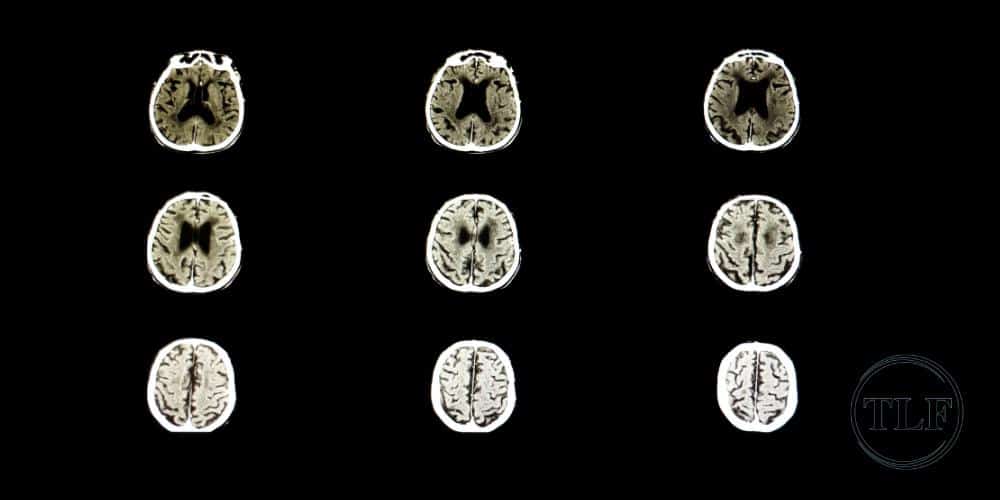Putting Our Knowledge And Experience To Work
Home » Medical Malpractice » Failure to Treat a Stroke With tPA
Failure to Treat a Stroke With tPA
Ohio and Northern Kentucky Medical Malpractice Attorneys for Failure to Administer tPA
If you or a loved one has ever had a stroke, you may be familiar with tPA, a medication used to help quickly treat strokes and prevent permanent damage. Medications like tPA can be life-changing and even life-saving, but some healthcare professionals fail to provide tPA treatment to patients who need it, or otherwise simply fail to assess a patient’s condition well enough to confirm whether or not they’re having a stroke.
If you or a loved one has suffered from a failure to treat or diagnose stroke, you may be able to file a medical malpractice claim against the negligent healthcare professionals responsible for the incident. The experienced emergency room negligence attorneys at TLF: The Medical Injury Law Firm are here to help victims seek justice from negligent emergency physicians and medical personnel.
We serve residents of both Northern Kentucky and Ohio and have a wealth of experience handling cases in both states. Call us toll-free at (800) 698-4054 to schedule a free consultation with a member of our team today.

What is tPA for Stroke?
A tissue plasminogen activator (tPA) is a form of thrombolytic therapy used to treat strokes. This medication can break down blood clots to promote blood flow, allowing the brain to receive oxygen in the event of an acute ischemic stroke.
Difference Between an Ischemic Stroke and a Hemorrhagic Stroke
A stroke is a cerebrovascular accident that inhibits blood flow to the brain, depriving it of oxygen. The longer that the brain goes without oxygen, the more damaged it becomes. Strokes are not just damaging, but they are also incredibly deadly. According to the American Stroke Association, 1 in 21 deaths in the U.S. were the result of a stroke in the year 2020.
People can suffer from a stroke as a result of either a ruptured blood vessel within the brain or a blood clot in the brain. Ischemic strokes are caused by clots, whereas hemorrhagic strokes are caused by broken blood vessels. Both can cause the brain to suffer from oxygen deprivation, but since these two kinds of strokes are caused by different things, they have to be treated differently.
How tPA Stroke Medication Works
Blood clots are comprised of a collection of blood cells that are bound together by fibrin, a protein that acts as a net to hold the blood cells together. The clot also has glycoproteins called plasminogen, which are attached to the clot.
The tPA travels through the bloodstream to the site of the clot, and the proteins in the medication bind to the plasminogen, turning it into plasmin. These plasmin enzymes then break down the fibrin, dissolving the clot and restoring blood flow to that portion of the brain.

Acute Ischemic Stroke Protocol
When someone is having a stroke, they will present a number of symptoms, including face drooping, arm or leg weakness, and speech difficulties. When someone notices these symptoms in someone else or begins experiencing these symptoms themselves, they should call an ambulance and go to the emergency room immediately.
If someone comes to the ER presenting stroke symptoms, medical staff will evaluate them. The National Institutes of Health Stroke Scale (NIHSS) can help doctors and other emergency health personnel diagnose stroke after a person begins exhibiting stroke symptoms.
If it’s likely that the person is having a stroke, their healthcare provider should order a CT scan, carotid ultrasound, or blood tests to determine the cause of the stroke. Either the stroke will be from a blood clot or the stroke will be from a hemorrhage.
After an emergency physician confirms that the patient is suffering from an ischemic stroke and not a hemorrhagic stroke, the patient can then begin tPA treatment. If needed, the patient can also undergo emergency thrombectomy, a surgical procedure that allows doctors to manually remove blood clots from veins.
When Should tPA Be Administered?
Stroke patients should only undergo tPA administration within 4.5 hours of the onset of their symptoms. These symptoms can include a severe headache, facial changes, arm weakness, and difficulty speaking.
Why is tPA Not Given After 4.5 Hours?
When it comes to ischemic strokes, timely treatment is essential in order to preserve valuable brain functions. Brain tissue can begin to die within minutes of losing oxygen and will not be able to recover. While tPA can help stop ischemic strokes, after a certain amount of time, the patient may already have severe brain damage which tPA treatment can’t undo.
Not only that, but administering tPA after 4.5 hours from symptom onset can put the patient at risk for severe bleeding and even death. The Federal Drug Administration has only ever approved use of tPA within 3 hours of onset of stroke symptoms, but many doctors use tPA within 4.5 hours as a general standard of care.
This is because even after 3 to 4.5 hours, the benefits of the medication outweigh the risks. After that window of time has passed, however, the risks of tPA use increase. A physician’s failure to diagnose an ischemic stroke in a timely manner can prevent the patient from receiving this lifesaving care, which could be considered medical malpractice.

Risks of tPA
While ischemic strokes are the most common type of stroke, administering tPA to any and every patient who is presenting stroke symptoms could be dangerous. Healthcare professionals only administer an intravenous tissue plasminogen activator when they are certain that the stroke is ischemic and not hemorrhagic.
While tPA administration can be incredibly beneficial for certain ischemic stroke patients, it could potentially lead to extreme bleeding in hemorrhagic stroke patients. Some studies disagree with these risks and state that tPA is safe for use in all stroke patients, whereas others confirm these risks to be very real and very dangerous.
In addition to the risks, doctors and nurses also have to take into account the medicolegal considerations of their actions. Emergency room personnel likely want to provide stroke patients with lifesaving emergency medicine like tPA. However, they may withhold treatment because they don’t want to be held liable in a medical malpractice lawsuit if the tPA does more harm than good.
Long-Term Effects of tPA
The long-term effects of tPA have been debated in research for a number of years. Acute ischemic stroke patients who are treated with tPA within the recommended window of time are at risk of experiencing a brain bleed or blood loss through their stool or urine. Additionally, stroke victims over the age of 65 have a higher risk of major hemorrhagic events as opposed to younger patients.

Contraindications for tPA
Not all acute stroke patients are eligible to receive tPA. A patient may not receive tPA at all if they have:
- An intracrainial hemorrhage
- A high blood pressure that won’t come down
- Suffered from severe head trauma within the past 3 months
- Active internal bleeding
- Had intracranial or spinal surgery within the past 3 months
- Had GI or urinary bleeding within the last 21 days
- High blood sugar (or stop exhibiting stroke symptoms after blood sugar is normalized)
- A low platelet count
A stroke patient may not receive tPA between 3 and 4.5 hours after the onset of their symptoms if they are:
- Are over the age of 80
- Are having a severe stroke (have an NIHSS above 25)
- Have a history of diabetes or a history of prior strokes
- Are taking any anticoagulant medication
These exclusion criteria ensure patients who are at high risk for complications as a result of tPA do not receive it. However, an eligible patient may be mistakenly ruled out for tPA treatment as a result of an emergency room misdiagnosis, miscommunication, or other errors. Because of this, they may suffer from severe, life-altering brain damage as a result of the delayed diagnosis or the failure to treat their stroke.
Can Stroke Patients Sue for Failure to Administer tPA?
Yes, stroke victims or their families can sue the medical staff for negligence as a result of delayed or withheld treatment. Medical malpractice can occur as a result of various actions and inactions, including a failure to diagnose or a failure to treat a given condition.
Eligible patients who do not receive tPA treatment in a timely fashion can suffer from permanent brain damage or brain death as a direct result of a healthcare provider’s negligence. These kinds of stroke cases can lead to successful medical malpractice lawsuits.
If your loved one was injured as a result of a lack of emergency medical care, the Ohio and Northern Kentucky medical malpractice lawyers at TLF: The Medical Injury Law Firm can help. Call us toll-free at (800) 698-4054 to discuss your potential case with one of our experts–at no cost to you.
Medical Malpractice Damages
Ischemic strokes can cause permanent brain damage or even death. If patients with acute ischemic stroke do not receive tPA treatment within the recommended window, they could suffer from severe brain damage and may require extensive assistive care. Victims of this kind of medical malpractice can recover compensation for damages such as:
- Past and future medical bills
- Lost wages
- Lost earning potential
- Assistive care
- Physical therapy
- Speech therapy
- Funeral and burial expenses, if wrongful death occurred
How the Medical Malpractice Attorneys at TLF Can Help
In order to prove that you or your loved one was the victim of malpractice, your medical malpractice attorney much establish the four elements of negligence. At TLF, we can prove negligence by investigating the circumstances surrounding the incident and conducting a systematic review of the patient’s medical records. This can help us prove that the medical personnel failed to diagnose the stroke in a timely fashion or failed to treat the stroke with tPA in the recommended window of time.
Emergency room medical malpractice cases also require expert witnesses, who will testify in court to help establish a baseline standard of care. If the physician failed to meet that standard of care, and the patient suffered from additional harm as a result, then the doctor may be found negligent.
At TLF, our attorneys are not just knowledgeable about medical malpractice cases; they are seasoned veterans of the field. We have over 100 years of combined experience in malpractice litigation. When you trust us with your case, we bring our decades of experience with us to the courtroom and use it to fight for justice on your behalf.

Call The Northern Kentucky and Ohio tPA Malpractice Attorneys at TLF: The Medical Injury Law Firm Today
When a doctor fails to timely diagnose a patient with an ischemic stroke, that patient could lose the ability to receive lifesaving medical care like tPA. This negligence is unnacceptable, and victims deserve to receive proper compensation for their losses.
If you or a loved one have suffered from emergency room negligence like a failure to diagnose stroke, you need an experienced legal team on your side to ensure you receive the best legal outcome for your case. Luckily, the skilled lawyers at TLF: The Medical Injury Law Firm are prepared to help you receive the compensation you deserve.
Our attorneys have experience handling countless medical malpractice claims, so you can rest easy knowing your case is in capable hands. We have offices in Covington, KY as well as Cincinnati, OH, so reach out to our office closest to you. Call our Kentucky office at 859-898-2472 or call our Ohio office at 513-643-1689. You can also call us toll-free at 800-698-4054 or schedule your free consultation with us online via our website.
Practice Areas
You Pay No Fees Unless We Win!
We are happy to offer a free consultation to evaluate your case. If you hire us as your legal counsel, we will represent you on a contingency-fee basis. You will pay no attorneys’ fees unless we recover financial damages.
